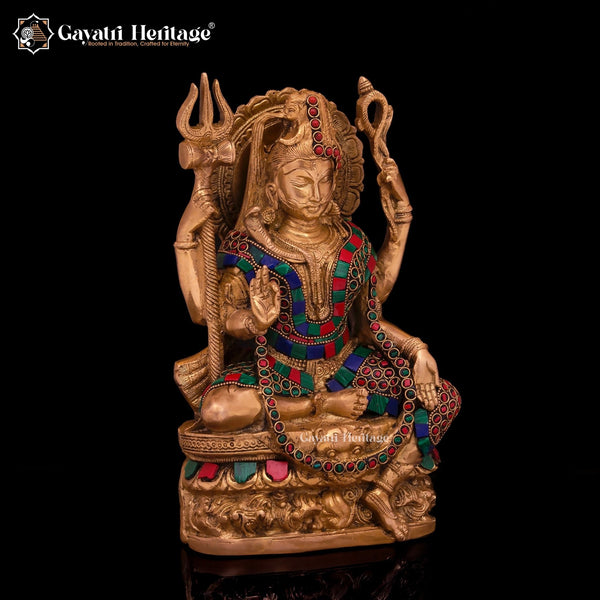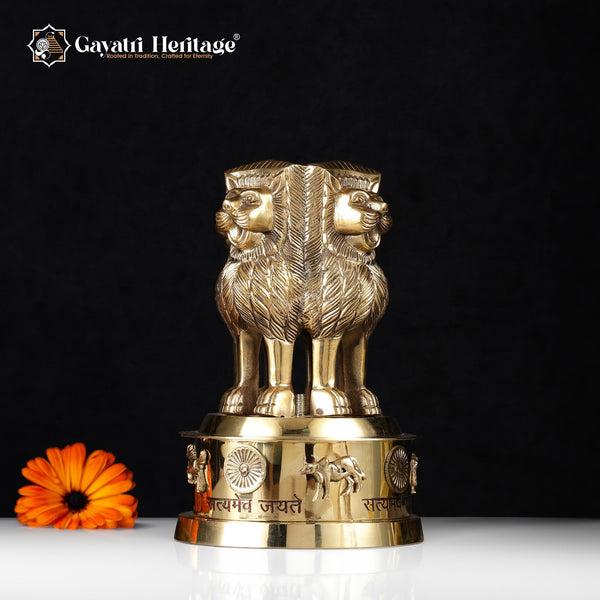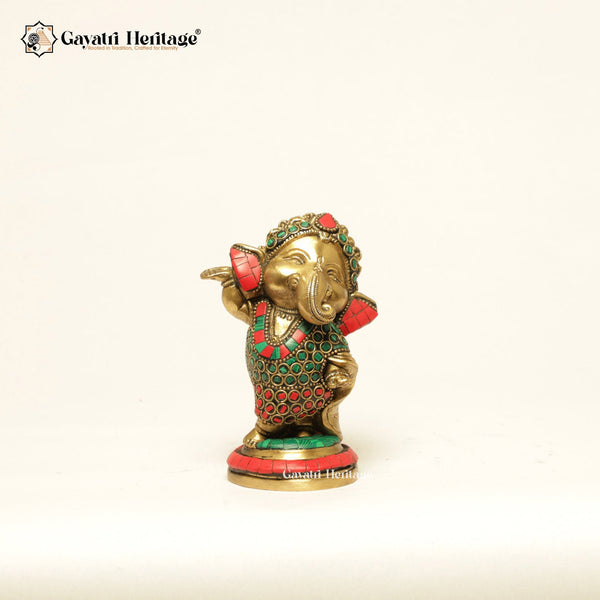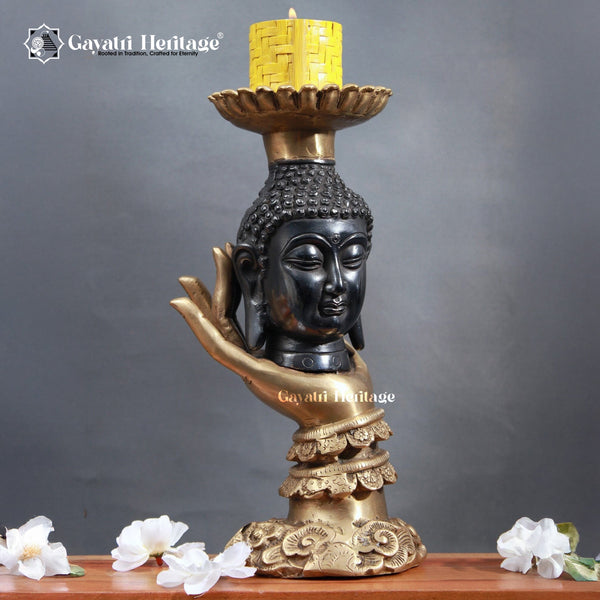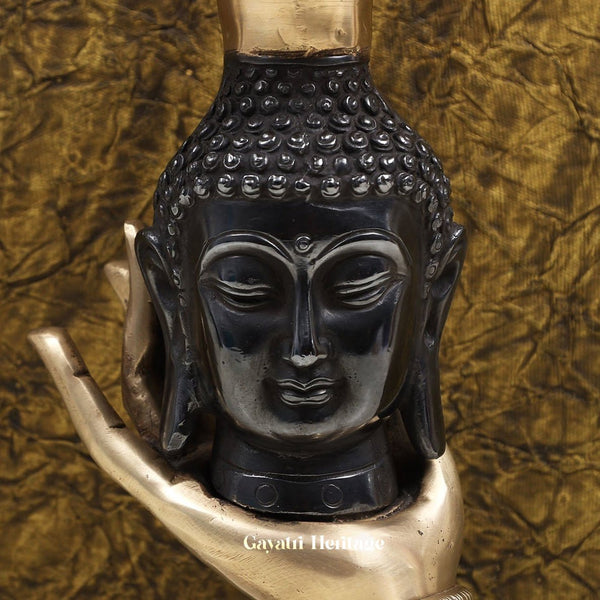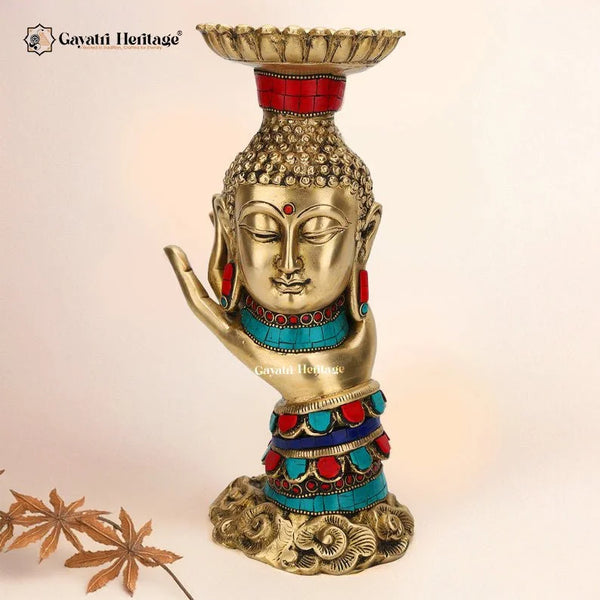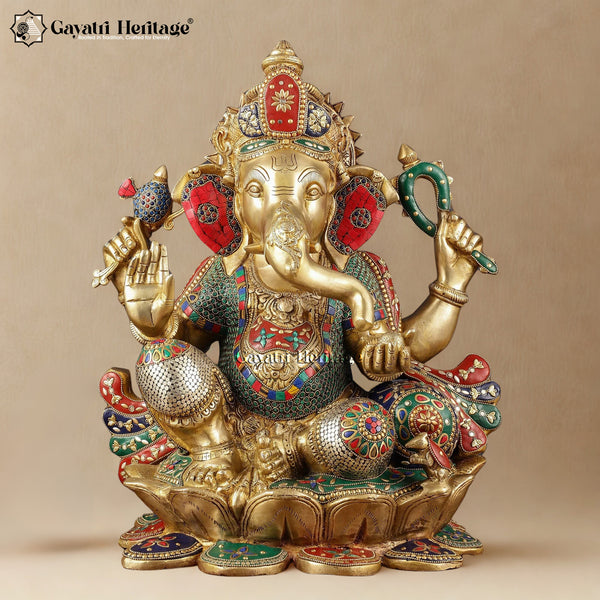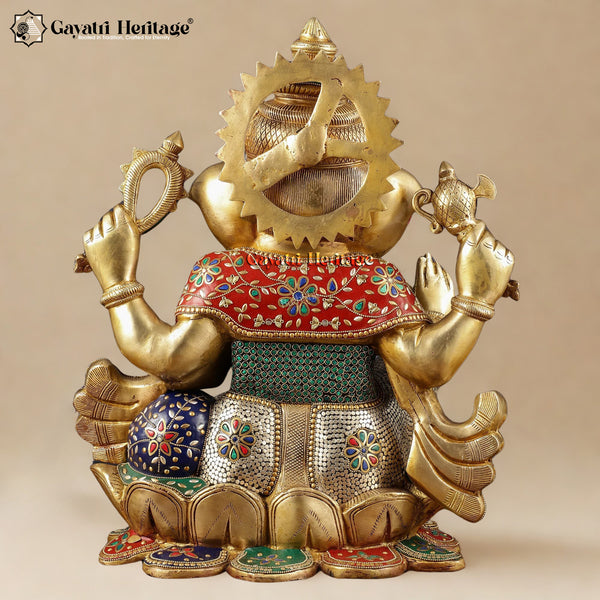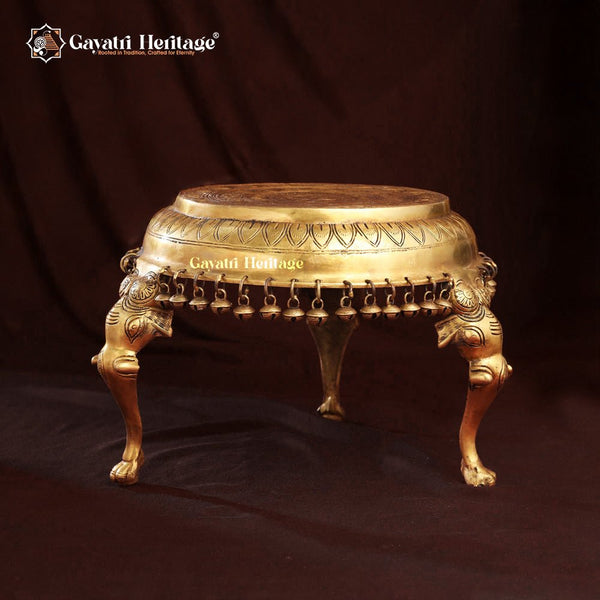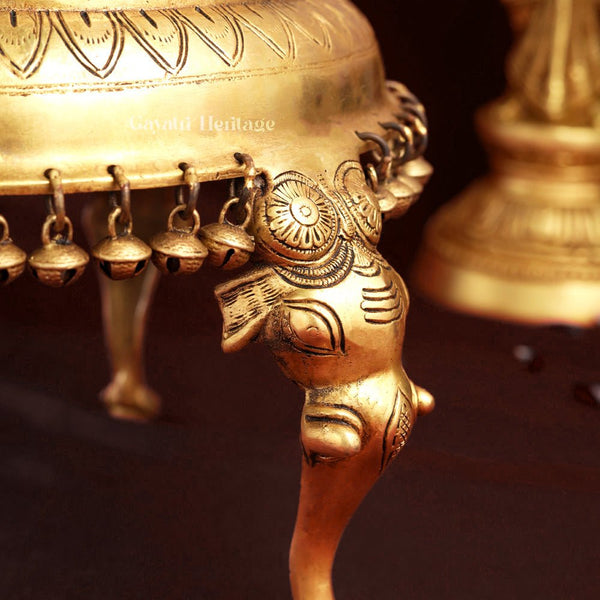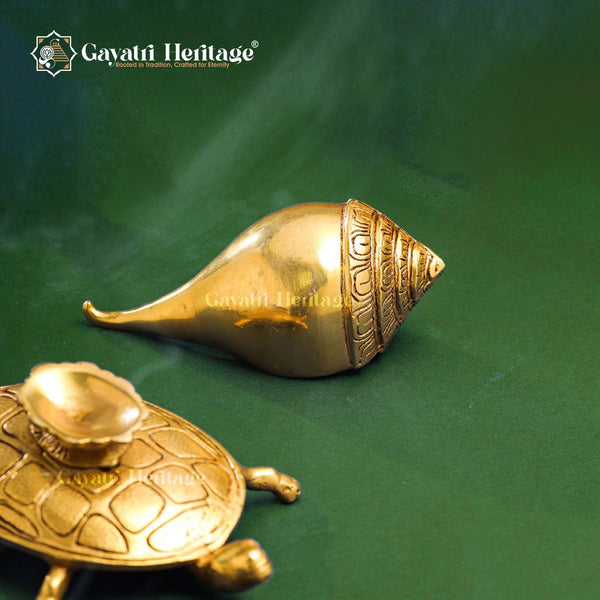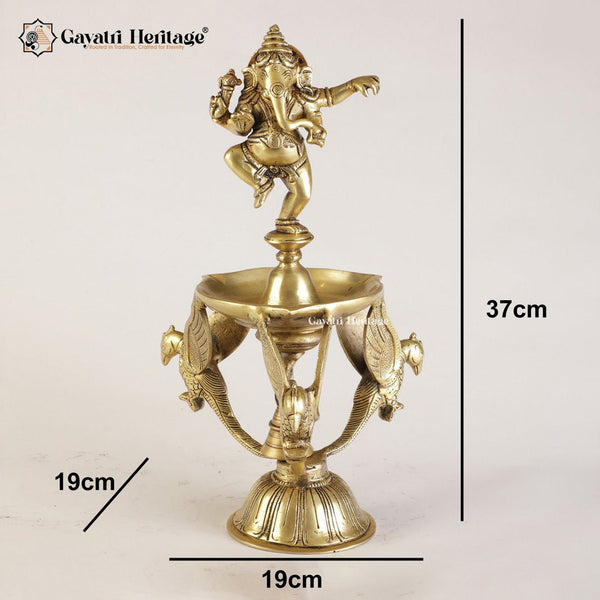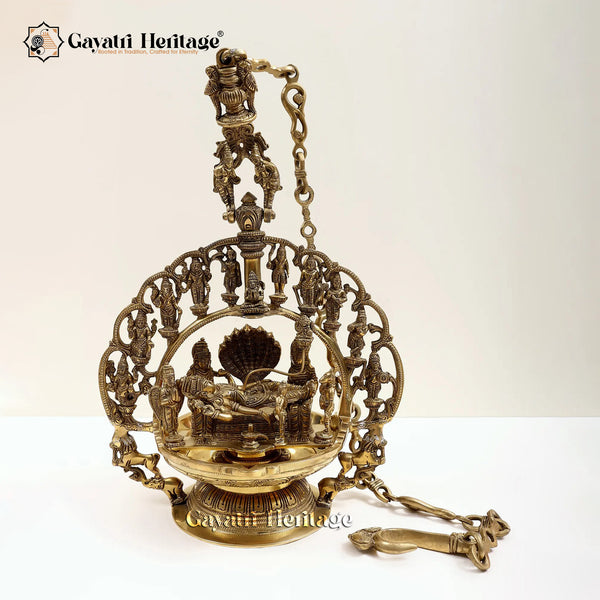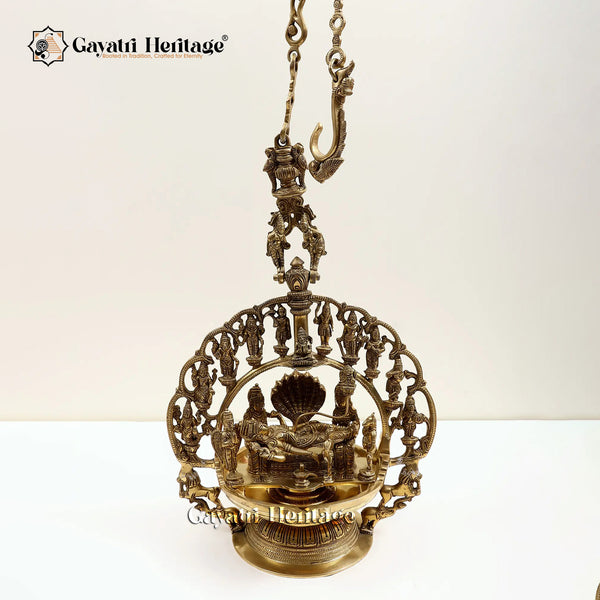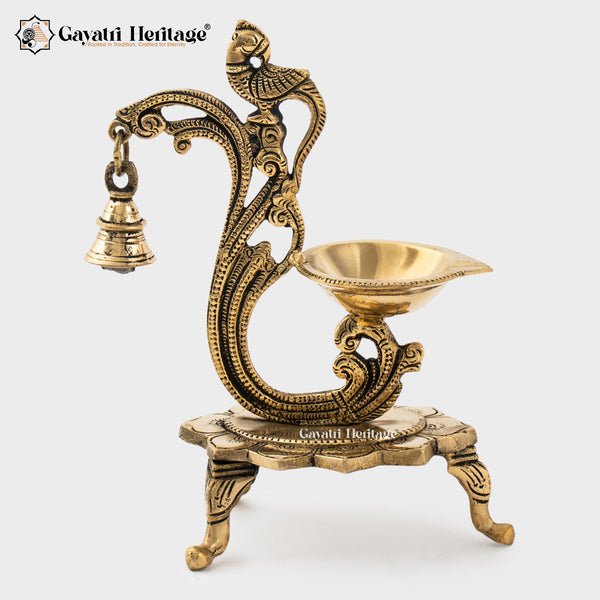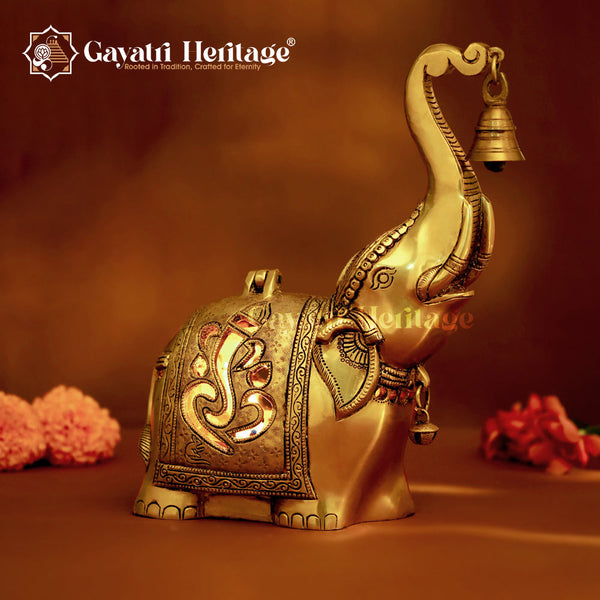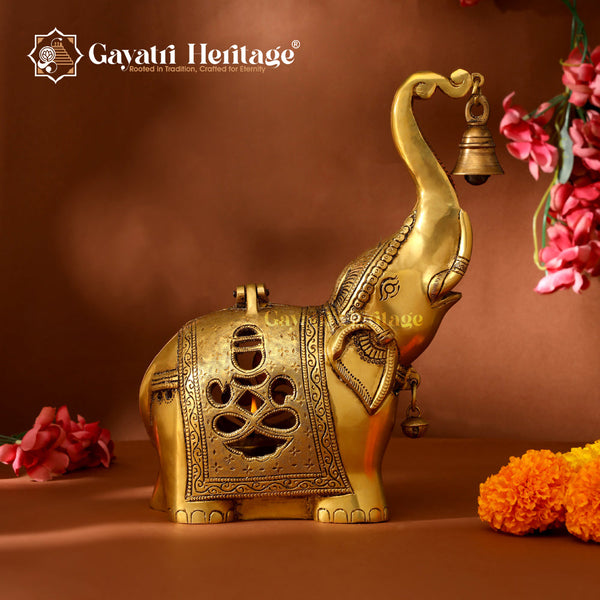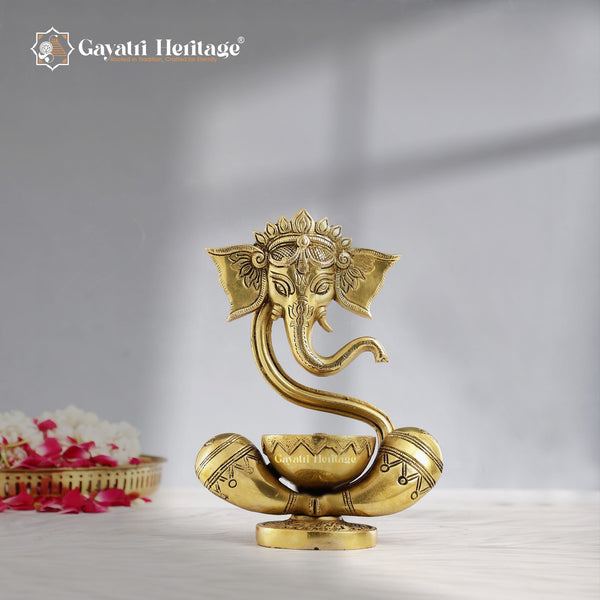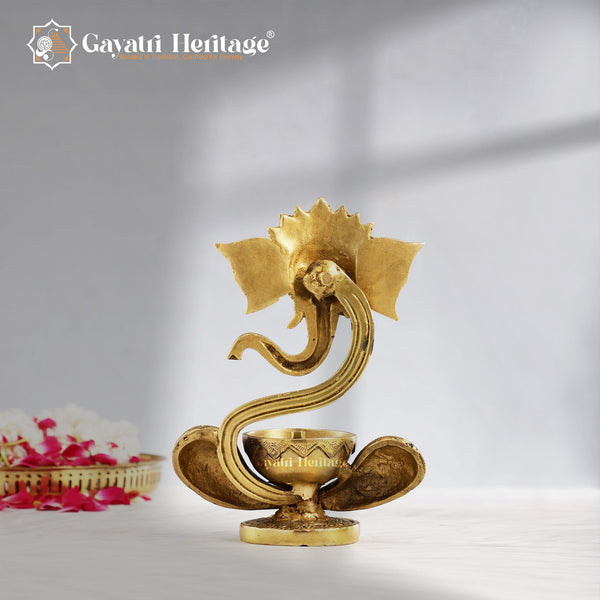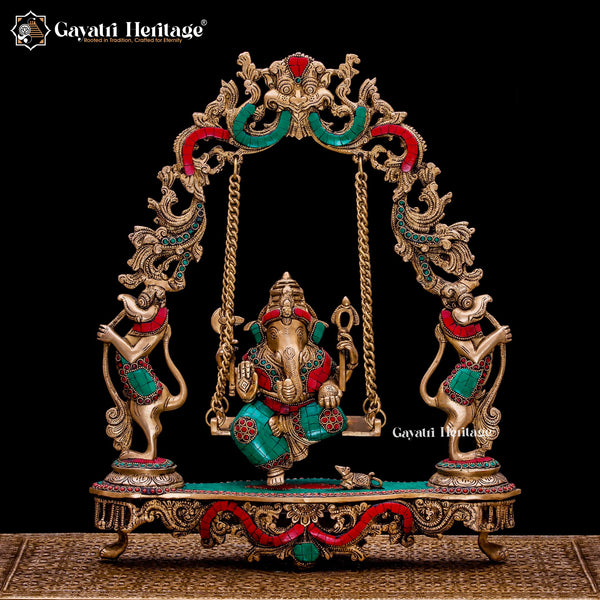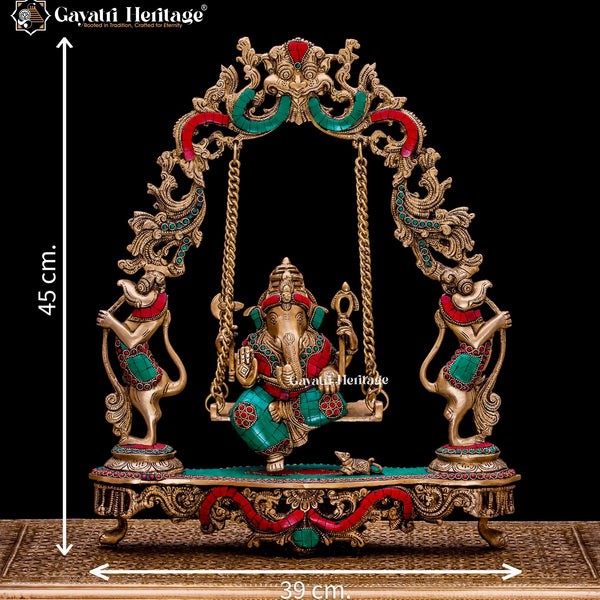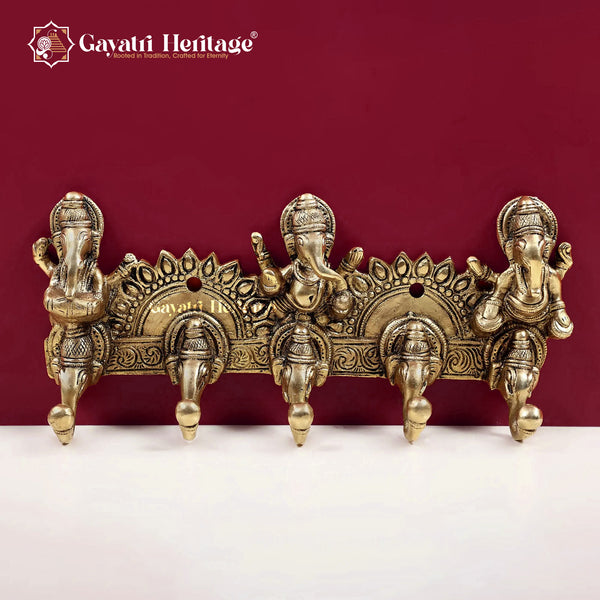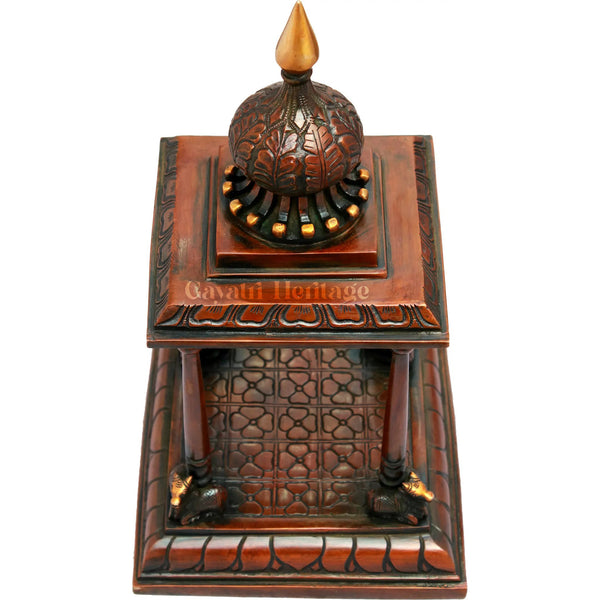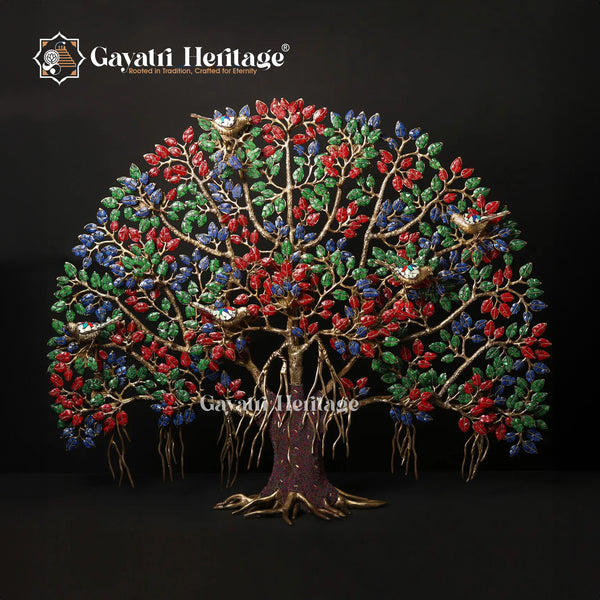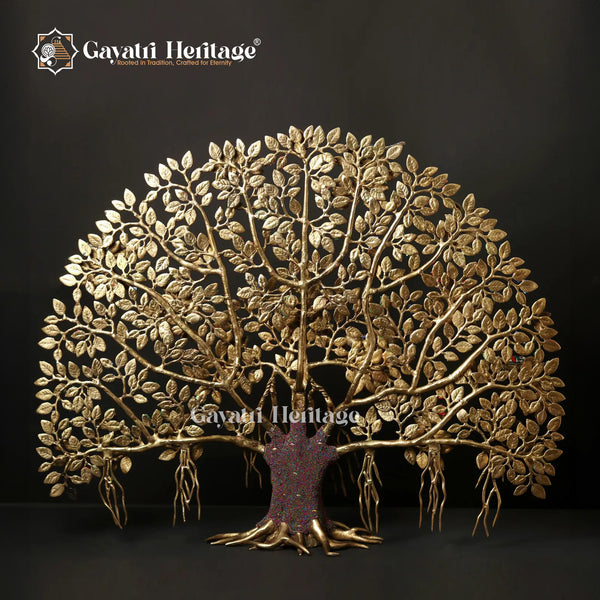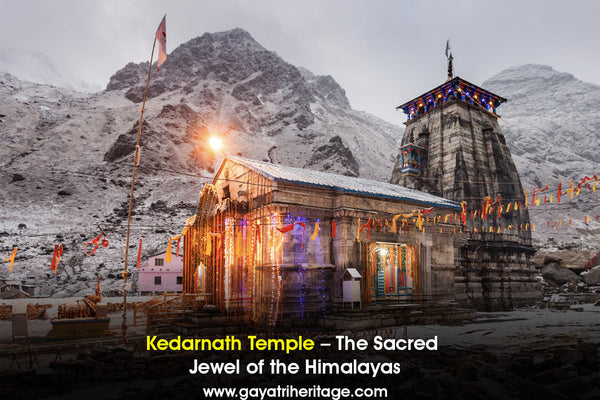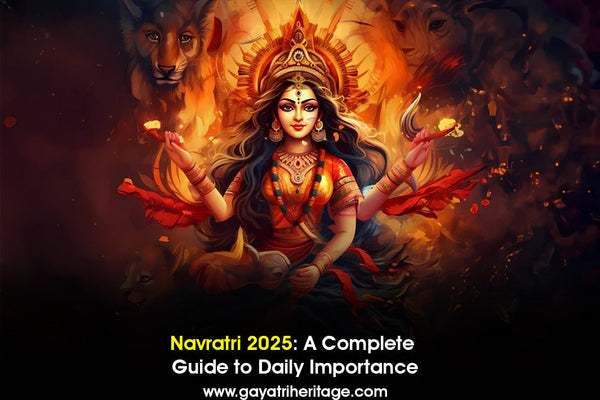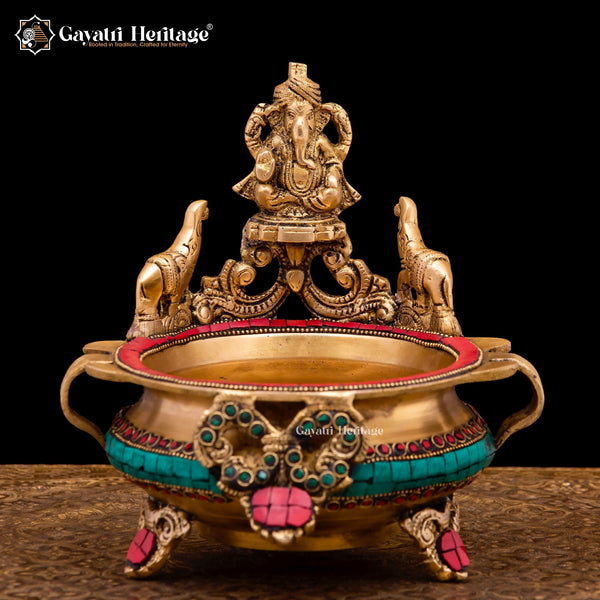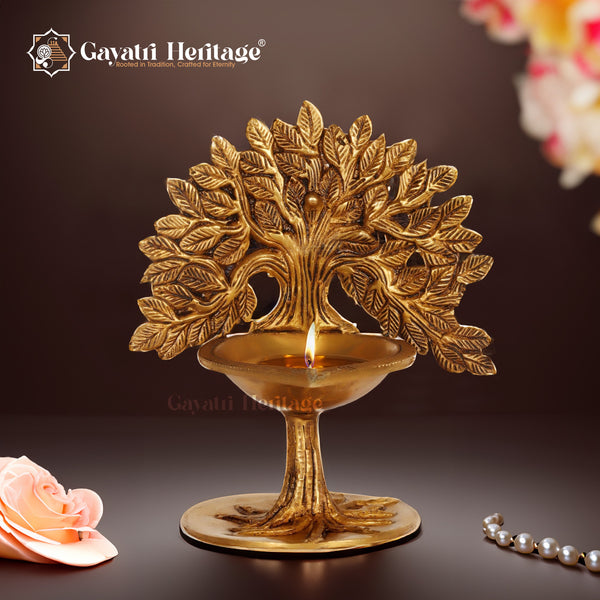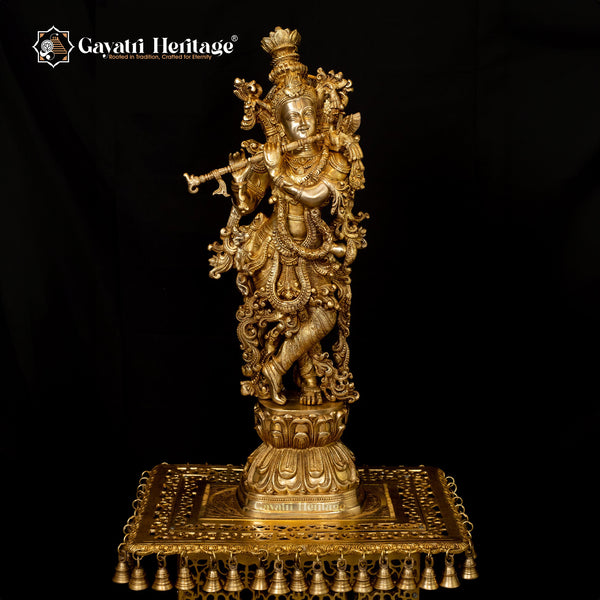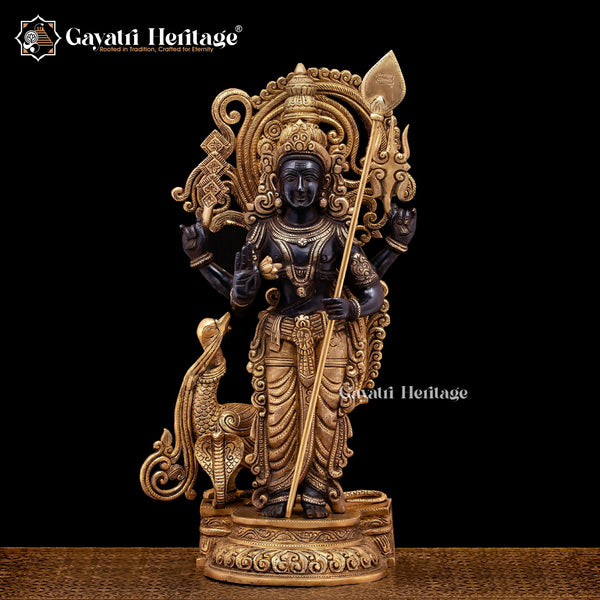India, with its rich cultural heritage, is home to some of the most awe-inspiring religious structures in the world. Among them, Shivlings hold a special significance in Hindu mythology, symbolizing Lord Shiva, the supreme cosmic power. If you're fascinated by the divine beauty and grandeur of these sacred structures, then this article is tailor-made for you.
In this article, we present to you the top 5 largest Shivlings in India, each more majestic than the other. From the iconic Kedarnath Temple in Uttarakhand to the historic Ramanathaswamy Temple in Tamil Nadu, these massive Shivlings will leave you spellbound with their sheer size and intricate craftsmanship.
Get ready to be transported to a world of spirituality and wonder as we delve into the architectural marvels of India's largest Shivlings. Whether you're searching for a spiritual experience or simply appreciate the magnificence of ancient architectural wonders, this article will take you on a virtual journey to witness these remarkable Shivlings up close.
Stay tuned as we unveil the secrets and stories behind these mesmerizing creations, providing you with a glimpse into the rich religious heritage of India. So, are you ready to embark on this divine pilgrimage? Let's begin!
Significance of Shivlings in Hinduism
Shivlings are revered symbols within Hinduism, representing Lord Shiva, one of the principal deities in the Hindu pantheon. In the spiritual context, the Shivling is not merely a representation of the physical form of Shiva but embodies the essence of the universe and the cosmic energy that pervades all creation. This makes the Shivling a vital component of Hindu worship and rituals, symbolizing creation, preservation, and destruction—the three fundamental aspects of existence. The presence of Shivlings in temples signifies the devotion and reverence Hindus have for Lord Shiva and the belief in his omnipresence.
The significance of Shivlings goes beyond mere worship; they are central to many spiritual practices, including meditation and chanting. The shape of the Shivling, typically cylindrical with a rounded top, is thought to represent the infinite nature of Shiva and his ability to transcend time and space. Devotees often seek blessings from the Shivling, believing that it holds the power to cleanse sins and grant spiritual liberation. Rituals performed around Shivlings, like the offering of water, milk, and flowers, are seen as acts of devotion that help in establishing a personal connection with the divine.
Moreover, the Shivling has a unique role in various myths and stories from Hindu scriptures. It is often depicted as a source of immense power and energy, a point from which the universe emanates. The ancient texts describe the emergence of the Shivling from the cosmic waters, symbolizing the beginning of time and the universe. This narrative not only enhances the reverence associated with Shivlings but also emphasizes their importance in understanding the philosophical underpinnings of Hinduism, where creation and destruction are seen as two sides of the same coin.
The concept of Shiva Linga
The concept of the Shiva Linga stems from an ancient tradition that encapsulates the mystical and philosophical dimensions of Lord Shiva. The term "Linga" itself translates to "mark" or "symbol," signifying the presence of divinity in a formless state. This abstraction allows devotees to comprehend the infinite nature of God, as it transcends the limitations of physical form. The Shiva Linga is often interpreted as a union of the masculine and feminine energies, representing the balance of creation and destruction, which is a core belief in Hindu philosophy.
In various Hindu scriptures, the Shiva Linga is described as a manifestation of Lord Shiva's divine power. The circular base represents the earth, while the vertical shaft symbolizes the cosmic energy that flows through the universe. This duality of form and formlessness conveys a profound spiritual message: that the divine can be both personal and impersonal, tangible and intangible. The act of worshipping the Shiva Linga thus becomes a means of acknowledging and honoring the divine presence within oneself and the universe.
Rituals surrounding the Shiva Linga are deeply symbolic and reflect the cosmic cycles of nature. Offerings made to the Linga, such as water and bilva leaves, are not just acts of devotion but also represent the flow of life and energy. The process of bathing the Linga symbolizes purification and renewal, mirroring the cycles of creation and destruction found in nature. Through these practices, devotees engage in a spiritual journey that connects them to the greater cosmic order, reinforcing the significance of the Shiva Linga in Hindu worship and spirituality
Top 5 largest Shivlings in India
India is home to numerous Shivlings, each with its unique history, significance, and architectural grandeur. Among these, some stand out for their sheer size and the devotion they inspire in millions of worshippers. These massive Shivlings are not just religious symbols; they are also remarkable feats of engineering and artistry, showcasing the rich cultural heritage of India. In this section, we will explore the top 5 largest Shivlings, each one a testament to the devotion and craftsmanship that has gone into their creation.
From the majestic Kedarnath Temple in Uttarakhand to the iconic Ramanathaswamy Temple in Tamil Nadu, these Shivlings draw visitors from across the globe, who come to pay their respects and experience the spiritual ambiance surrounding them. Each site is steeped in mythology and history, often linked to legendary tales of Lord Shiva. The stories associated with these Shivlings add layers of meaning to their existence, making them not just places of worship but also centers of cultural and spiritual learning.
As we embark on this journey to discover the largest Shivlings, we will delve into their architectural marvels, the legends that surround them, and the spiritual experiences they offer. Each Shivling has its unique charm and significance, making this exploration both enlightening and awe-inspiring. So, let's dive deeper into the heart of India and uncover the majesty of these sacred symbols of devotion.
Kashi Vishwanath Temple, Varanasi

The Kashi Vishwanath Temple, located in the holy city of Varanasi, is home to one of the most revered Shivlings in India. This temple is dedicated to Lord Shiva, who is worshipped here as Vishwanath, the "Lord of the Universe." The Shivling housed within this ancient temple is not only significant in size but also carries immense spiritual weight for millions of devotees. It is believed that a visit to Kashi brings liberation from the cycle of birth and death, making it a pivotal pilgrimage site in Hinduism.
The architecture of the Kashi Vishwanath Temple is a fusion of various styles, reflecting the temple's long and tumultuous history. The original temple was built in 1780 by Maharani Ahilyabai Holkar, and it has since undergone renovations and expansions. Despite the changes, the central Shivling remains a focal point of worship, attracting devotees from all over the country. The temple's ambiance is filled with chanting and prayers, creating an atmosphere of divinity and spiritual fervor.
What sets the Kashi Vishwanath Temple apart is not just the size of its Shivling but also the rich tapestry of stories associated with it. According to legends, Lord Shiva chose Varanasi as his abode, and this temple is said to mark the spot where he resides. The temple is also connected to numerous mythological tales that enhance its significance, making it a symbol of faith and devotion. Visiting Kashi Vishwanath Temple is an experience that transcends mere tourism; it is a spiritual journey to the heart of Hindu belief.
Brihadeeswarar Temple, Thanjavur

Brihadeeswarar Temple, also known as Peruvudaiyar Kovil, is a UNESCO World Heritage Site located in Thanjavur, Tamil Nadu. This architectural marvel was built in the 11th century by the Chola dynasty and is dedicated to Lord Shiva, who is worshipped here through the massive Shiva Linga that stands 3.7 meters tall. The temple is an epitome of Dravidian architecture and showcases the grandeur and artistic prowess of the Chola period. The sheer scale of the Shivling, combined with the intricate carvings and grand architecture, makes it one of the largest and most important temples in India.
The temple's towering vimana (the structure above the sanctum) is an incredible 66 meters high, making it one of the tallest in the world. The Shivling within the temple is uniquely designed, with a rounded top symbolizing the cosmic energy of Lord Shiva. Pilgrims and tourists alike are drawn to this sacred site, where the air is thick with devotion and reverence. Rituals performed here, particularly during the festival of Maha Shivaratri, attract thousands of devotees, creating a vibrant and spiritual atmosphere.
Beyond its physical dimensions, Brihadeeswarar Temple holds deep spiritual significance. It is believed that worshipping the Shivling here can bestow blessings of health, wealth, and wisdom. The temple's historical importance, combined with its architectural grandeur, makes it a must-visit destination for anyone seeking to understand the cultural richness of India. The stories of devotion and the presence of the divine are palpable, making this temple a true gem in the landscape of Indian spirituality.
Lingaraja Temple, Bhubaneswar

The Lingaraja Temple, located in Bhubaneswar, Odisha, is one of the most significant and largest Shivling temples in India. Dedicated to Lord Shiva as Lingaraja, or "King of Lingas," this ancient temple dates back to the 11th century and is a splendid example of Kalinga architecture. The temple complex features a massive Shivling that stands approximately 2 meters tall, surrounded by intricately carved pillars and exquisite sculptures that narrate various stories from Hindu mythology. The height and craftsmanship of the Shivling make it a focal point of worship and admiration for visitors.
As a prominent pilgrimage site, Lingaraja Temple attracts thousands of devotees, especially during the festival of Shivaratri. The atmosphere is filled with chanting, prayers, and the ringing of temple bells, creating a spiritual ambiance that resonates deeply with visitors. The rituals performed here, including the daily abhishekam (ritual bathing) of the Shivling, reflect the devotion of the worshippers and the cultural significance of the temple in the region. It is believed that offering prayers at this temple can help devotees attain peace and prosperity.
In addition to its spiritual importance, the Lingaraja Temple is also a treasure trove of art and architecture. The temple's walls are adorned with intricate carvings and reliefs depicting various deities, celestial beings, and scenes from Hindu epics. This artistic expression not only enhances the temple's aesthetic appeal but also serves as a visual narrative of the rich cultural heritage of Odisha. The combination of spirituality, artistry, and history makes the Lingaraja Temple a must-visit destination for anyone exploring the largest Shivlings in India.
Meenakshi Amman Temple, Madurai

Meenakshi Amman Temple, located in the historic city of Madurai, Tamil Nadu, is one of the largest and most revered temples in India. This magnificent temple is dedicated to Goddess Meenakshi, an incarnation of Parvati, and her consort, Lord Shiva, who is worshipped in the form of a massive Shivling. The temple complex is renowned for its stunning architecture and intricate sculptures, with the Shivling being a central figure in the worship practices held here. The height of the Shivling, along with its ornate decorations, draws pilgrims and tourists alike, eager to witness its grandeur.
The temple is famous for its towering gopurams (gateway towers) adorned with thousands of colorful sculptures depicting various deities and mythological figures. The main hall, known as the Meenakshi Nayakkar Mandapam, is a marvel in itself, featuring intricately carved pillars that narrate the stories of Hindu mythology. The annual festival of Meenakshi Tirukalyanam, which celebrates the divine marriage of Meenakshi and Shiva, attracts millions of devotees, transforming the temple into a vibrant hub of spiritual energy.
Meenakshi Amman Temple is not just a place of worship; it is a symbol of the cultural and historical heritage of Tamil Nadu. The legends surrounding the temple, including the story of Goddess Meenakshi's birth and her union with Lord Shiva, add layers of significance to the Shivling. The spiritual ambiance, combined with the artistic brilliance of the temple, makes it a must-visit for anyone exploring the largest Shivlings in India. The experience of worshipping at this temple is one of profound reverence and connection to the divine.
Omkareshwar Temple, Madhya Pradesh

Omkareshwar Temple, situated on the island of Mandhata in the Mandhya district of Madhya Pradesh, is one of the most revered temples dedicated to Lord Shiva. The temple is unique as it is built in the shape of the sacred Hindu symbol "OM," reflecting its spiritual significance. The massive Shivling housed within the temple is approximately 2 meters tall, making it one of the largest in India. The temple's location on the banks of the Narmada River adds to its spiritual ambiance, attracting pilgrims who seek blessings and divine connection.
The architecture of Omkareshwar Temple is an exquisite blend of traditional and modern styles, showcasing the artistic prowess of the craftsmen who built it. The intricate carvings and sculptures that adorn the temple walls narrate stories from Hindu mythology, enhancing the spiritual experience for visitors. The rituals performed here, particularly during the festival of Mahashivaratri, draw large crowds of devotees who come to offer their prayers and seek blessings from the Shivling.
Omkareshwar is not only a place of worship but also a pilgrimage site that holds deep spiritual significance. It is believed that visiting this temple and offering prayers can help devotees attain peace and liberation from the cycle of birth and death. The serene environment and the presence of the Shivling create a sense of tranquility that resonates with visitors. The combination of its unique architecture, rich history, and spiritual importance makes Omkareshwar Temple a must-visit destination for those exploring the largest Shivlings in India.
Conclusion and final thoughts
As we conclude our journey through the top 10 largest Shivlings in India, we are left with a profound appreciation for the architectural marvels and spiritual significance these sacred structures hold. Each Shivling represents not just a religious symbol but also a deep connection to the cultural and historical fabric of India. From the bustling Kashi Vishwanath Temple in Varanasi to the serene Omkareshwar Temple in Madhya Pradesh, these sites are gateways to understanding the essence of Hindu devotion and the reverence for Lord Shiva.
The stories and legends associated with these Shivlings enrich our understanding of Hindu mythology and the philosophical underpinnings that define the religion. They remind us of the timeless pursuit of spirituality and the quest for divine connection that transcends generations. The sheer size and beauty of these Shivlings are a testament to the devotion of countless artisans and worshippers who have contributed to their legacy over the centuries.
Visiting these colossal Shivlings is more than just a physical journey; it is an exploration of faith, history, and artistry. Whether you seek spiritual enlightenment or simply wish to marvel at the grandeur of ancient architecture, these sacred sites offer an experience that resonates on multiple levels. As you embark on your own pilgrimage to witness these remarkable Shivlings, may you find inspiration and a deeper connection to the cosmic energies that they symbolize.
Stay Connected with Gayatri Heritage
Discover handcrafted brass idols and spiritual decor inspired by India’s rich heritage. Visit our website to explore our exquisite collection:
Follow us on social media for updates, insights, and new arrivals!






